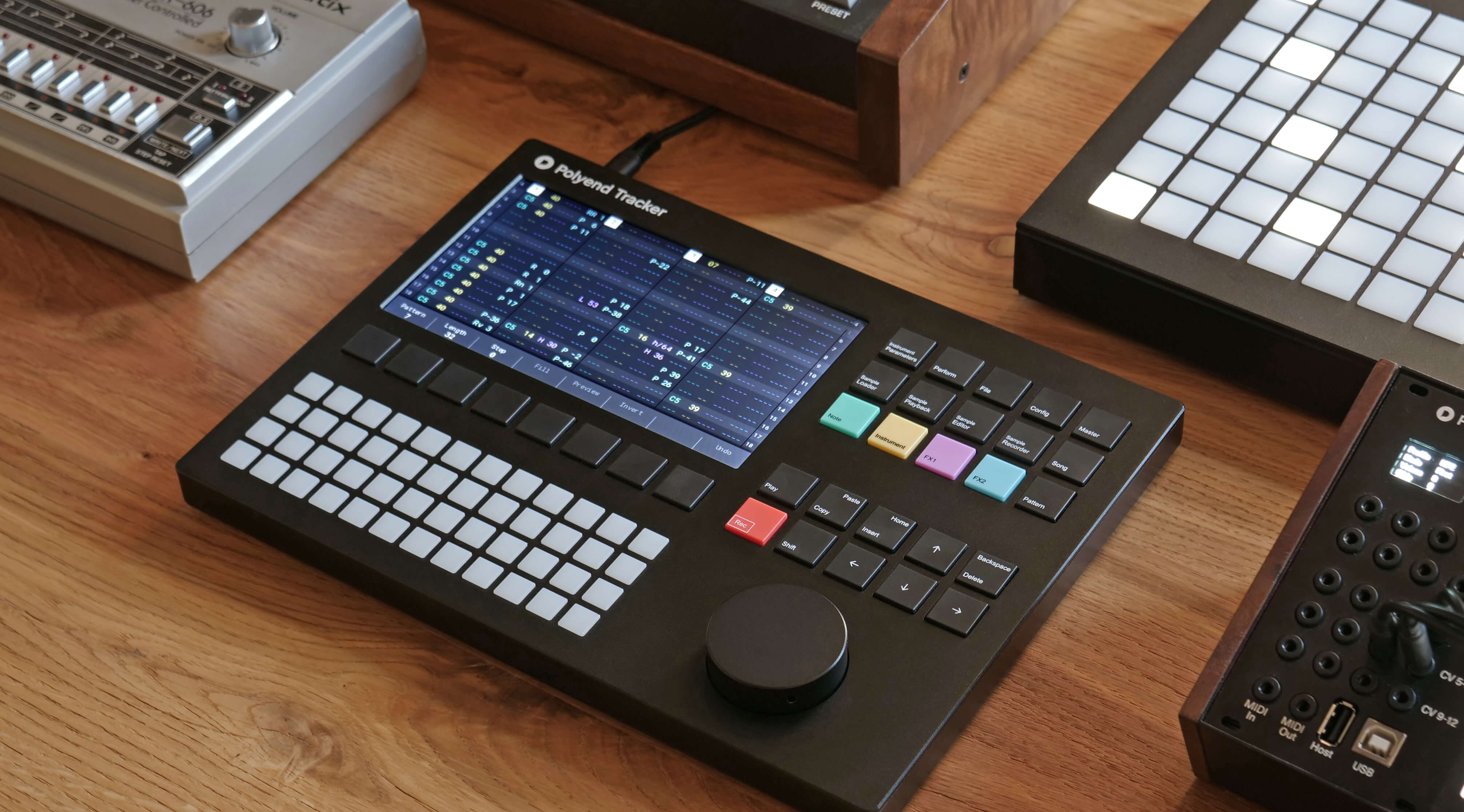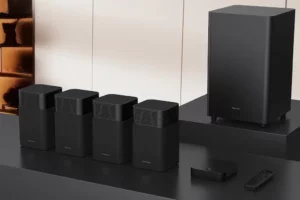A Groovebox Reimagined:
The Polyend Tracker lineage has carved a niche for itself in the hearts of electronic music producers seeking a powerful and versatile groovebox experience. The Polyend Tracker+, the latest iteration in this series, promises to refine the familiar formula while introducing some key improvements. Let’s delve into the design, performance upgrades, workflow enhancements, and potential benefits of this highly anticipated instrument to see if it lives up to its legacy.
![]()
A Classic Form Factor, Evolved: Design and Build Quality
The Polyend Tracker+ retains the iconic and portable design that has become synonymous with the Tracker series. The lightweight yet sturdy aluminum chassis ensures excellent build quality and durability. The layout prioritizes hands-on control, with dedicated buttons and knobs for manipulating samples, sequencing patterns, and navigating menus. The inclusion of illuminated rubber performance pads provides a familiar and tactile playing experience.
Here’s a quick comparison of the design with a popular competitor:
| Feature | Polyend Tracker+ | Elektron Digitakt |
|---|---|---|
| Design Language | Classic groovebox, tactile controls | Industrial, knob-per-function design |
| Form Factor | Portable, battery-powered | Portable, battery-powered |
Both the Tracker+ and the Elektron Digitakt offer a portable and performance-oriented design, catering to producers who value hands-on control. However, the Tracker+ retains a slightly more compact and streamlined form factor.
![]()
Under the Hood: Unveiling Performance Enhancements
The Polyend Tracker+ boasts several improvements beneath the hood:
- Faster Processor: The Tracker+ utilizes a more powerful processor, resulting in smoother operation, faster sample loading times, and improved responsiveness.
- Expanded Memory: The internal storage capacity is significantly increased, allowing for more samples, projects, and longer song creation.
- Enhanced Workflow: The Tracker+ introduces new features like chromatic keyboard mode, improved sampling capabilities, and a dedicated master section for streamlined mixing and effects processing.
Here’s a breakdown of the key upgrades compared to its predecessor:
| Feature | Polyend Tracker+ | Polyend Tracker |
|---|---|---|
| Processor | Faster processor | Older generation processor |
| Internal Storage | Increased storage capacity | Lower storage capacity |
| Workflow Enhancements | Chromatic keyboard mode, improved sampling, dedicated master section | Fewer workflow enhancements |
These performance enhancements address some limitations of the original Tracker, potentially making the Tracker+ a more powerful and streamlined production tool.
A Symphony of Sound: Sample Engine and Synthesis Capabilities
The Polyend Tracker+ remains a powerhouse for sample manipulation. It features a high-quality sampling engine with extended recording time compared to its predecessor. Additionally, the Tracker+ boasts four digital synths: two subtractive synths, a wavetable synth, and a new FM synth. These internal synths allow for a wider range of sound creation possibilities, complementing the sampling capabilities.
Here’s a look at the audio engine compared to a competitor:
| Feature | Polyend Tracker+ | MPC One |
|---|---|---|
| Sample Engine | High-quality, extended recording time | High-quality sampling engine |
| Synthesis Capabilities | Four digital synths (2 subtractive, wavetable, FM) | Limited onboard synthesis capabilities |
The Tracker+ offers a more comprehensive audio engine with its combination of advanced sampling and versatile digital synthesis options, potentially surpassing the more limited onboard synthesis capabilities of the MPC One.

The Power of Workflow: A Familiar Interface with New Possibilities
The Polyend Tracker+ retains the familiar and step-based sequencer workflow that the Tracker series is known for. This allows producers to create intricate patterns and arrangements with ease. The addition of chromatic keyboard mode provides a new way to input notes, expanding the creative possibilities. Additionally, the dedicated master section streamlines mixing and effects processing, allowing for on-the-fly sound sculpting.
Here’s a comparison of the workflow with a popular competitor:
| Feature | Polyend Tracker+ | Teenage Engineering OP-Z |
|---|---|---|
| Sequencer | Step-based, familiar to Tracker users | Step-based with unique visual representation |
| Workflow Enhancements | Chromatic keyboard mode, dedicated master section | Parameter locks, performance-oriented features |
The Tracker+ maintains the core sequencer workflow beloved by Tracker users but introduces new elements like chromatic keyboard mode and a dedicated master section. While the Teenage Engineering OP-Z offers a visually distinct step sequencer and performance-oriented features, the Tracker+ prioritizes a more traditional and hands-on workflow.















Add Comment